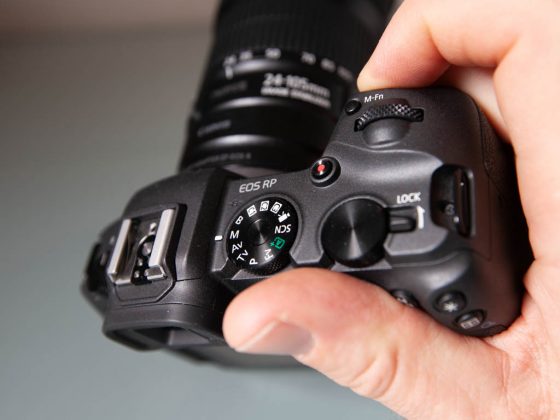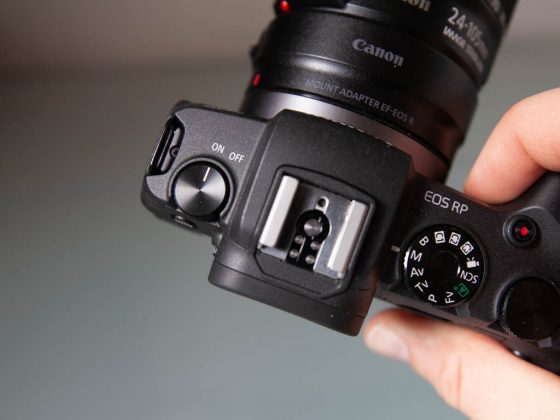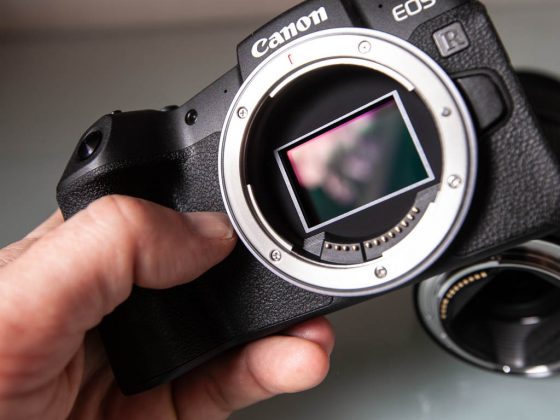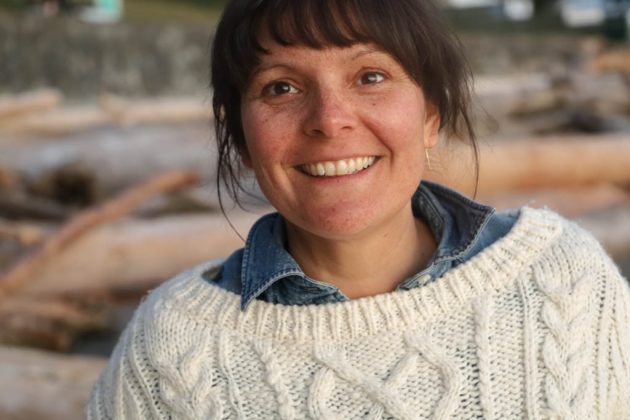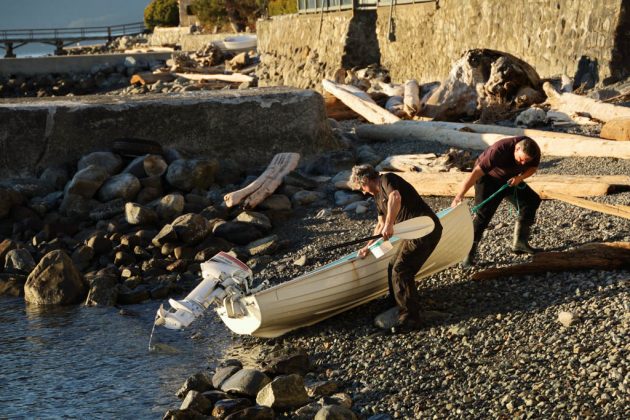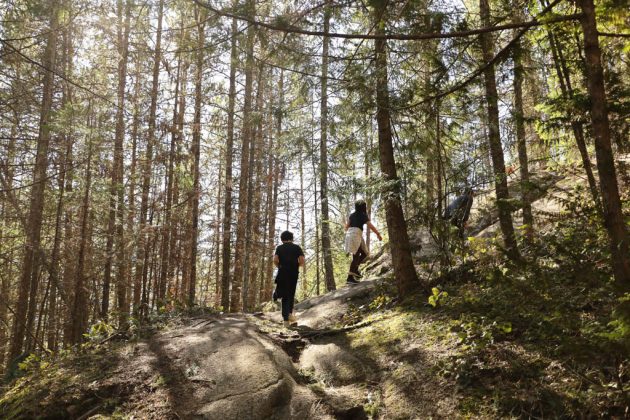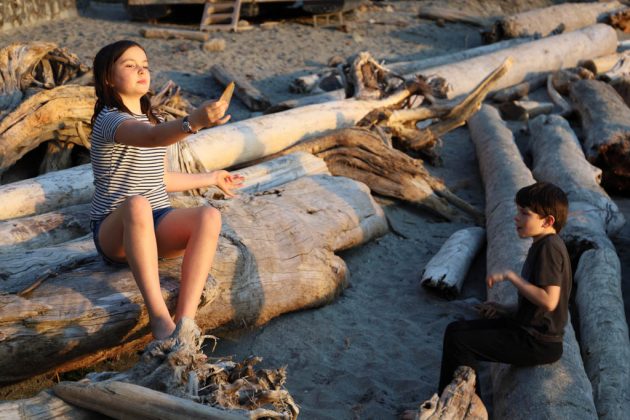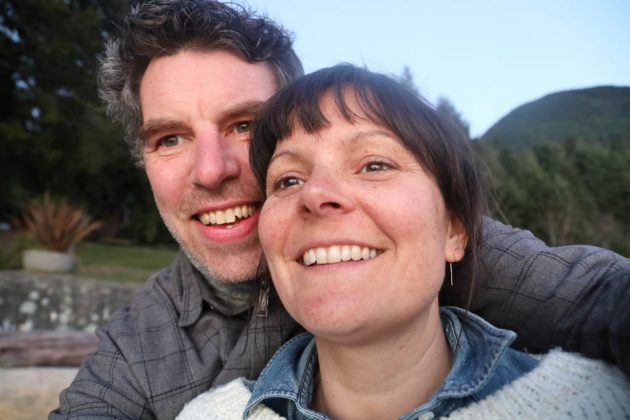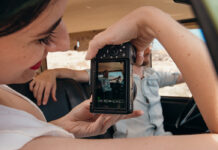
The Canon EOS RP is the second full-frame mirrorless camera ever produced by Canon. It’s a slightly stripped down version of the original R model, aimed at photography enthusiasts who want to get their hands on a full-frame camera, without breaking the bank.
The RP sports a 26.2 megapixel CMOS sensor inside one of the smallest full-frame camera bodies ever produced. It is capable of shooting 5 frames a second at an ISO range stretching all the way to 40000. It has an LCD touchscreen which tilts and swivels every which way. It is wifi enabled, which means you can operate it remotely from your smartphone and download images smartphone instantly.
Fully-functional touchscreen
Let’s talk about ergonomics right off the bat. As you can see from the images below, the RP is pretty minimal in terms of buttons and dials, but it has enough to give you easy access to everything you need. The fact that you can also quickly access many settings via the touchscreen is a huge advantage. This is actually the first camera that I’ve used where the touchscreen is fully enabled, allowing you to do everything you would expect in terms of managing settings, accessing menus, swiping through your images—and zooming in on them. You can even tap it to quickly refocus and shoot a photo. Use that feature with the screen facing forward and you’re in selfie heaven.
A very small mirrorless camera
As you’ll see in the video, I actually find the RP a little bit small. As I wrap my hand around the camera, my little finger has nowhere to go. As someone who doesn’t like to use a neck strap I rely heavily on my ability to keep a good grip on my camera, so using three fingers instead of four definitely feels less secure. I’m sure at some point you will be able to get a battery grip for the RP but as of right now that’s not an option.
The funny thing about small camera bodies is they are often outweighed by the lens attached to them, which kind of negates any advantaged gained. As you’ll see in my video, and in the photo at the top, the 24-105mm lens looks like a monster mounted on that little body.
The Canon EOS RP has a new type of mount designed for RF lenses, so if you’re a Canon shooter and you have a collection of EF lenses, you can use them, but you will need to purchase an adapter. I’ll be interested to see the RF lenses as they become available.
Video capabilities
I’ve been shooting a lot of video lately so I was really interested to see how the RP performed in this area. In terms of specs, it’s nothing “spectacular” offering 4k at 30fps and full HD at up to 60fps. I would have hoped for 120fps for those truly sumptuous slo-mos. That said, if you’re a casual video shooter, or even a documentary filmmaker looking for something light and portable, there’s a strong case for the RP. The tiltable screen works great, it has a dedicated record button, and it manages exposure really effectively, automatically compensating for light changes with gradual transitions. The autofocus is nice too, moving from point to point smoothly. You can also use the touchscreen to change your focus point.
Another feature that worked well for me was the video stabilization. This is not the same as true image stabilization, where the sensor itself can move to compensate for your hand movements. It’s just an algorithm that the processor applies to the video that you capture. But when combined with the image stabilization that came with the lens I was using, it made for surprisingly smooth shots.
Moving the focus point is a true highlight of the Canon EOS RP
One of the first things I looked for when I unboxed the RP was the little joystick-type button I have on the back of my 5D that I use to move my focus point around. I’m not a fan of letting the camera decide what the subject of my photo is, and so I really need to be able to easily move my focus point between shots. When you’re using the large LCD screen on the RP to compose your images this isn’t a huge problem because you simply tap the screen on the point where your subject lies. But I regularly compose my images using the viewfinder, especially on sunny days, and when you put your eye to the viewfinder on the RP the touchscreen goes black. I was a bit confused for a minute until I discovered that you can move the focus point around using your thumb on the screen, even with your eye to the viewfinder, which turns out to be the best system I’ve seen anywhere—ever! So straightforward and intuitive.
As I mentioned above, the LCD screen blacks out when you put your eye to the viewfinder, and the little screen inside the viewfinder comes to life. The problem I found with this, however, is that the sensor often notices your fingers as the pass by while you’re using the touchscreen, which causes the big LCD screen to black out unexpectedly.
Almost USB rechargeable
When I first looked at the features of the RP, I was very pleased to see that it is USB rechargeable. I love this feature because it means that I can charge my camera pretty much anytime, anywhere. It’s brilliant for traveling because USB is a universal standard. However when I dug a little deeper I found out that you need to buy a special charger, the PD-E1, in order to enable this feature, which was a huge disappointment. I’m not sure how Canon arrived at this solution, but I feel like they kind of dropped the ball there.
Slower shutter than expected
Another downside of the RP is that the shutter speed only goes up to 1/4000 sec, which is pretty slow, especially for a mirrorless camera. In all honesty this is pretty standard for entry level cameras, but it is a limitation worth noting nonetheless. Professional portrait photographers, for example, would demand a shutter speed of at least 1/8000 sec, because it allows you to use wide apertures in very bright conditions and get that shallow depth of field and blurred out backgrounds that people swoon over. Mirrorless cameras often have a feature called electronic shutter which allows you to shoot at speeds up to 1/32000 sec, and also silently, without the traditional shutter sound. No such feature on the RP unfortunately.
Conclusion
All in all I have to say I really enjoyed shooting with the Canon EOS RP. I found some of its features very useful, and I feel like there was more to discover, if only I had more time to play with it! The image quality was as good as I would expect from a Canon camera, and despite a few downsides, I think it represents a solid investment for the serious camera enthusiast.

